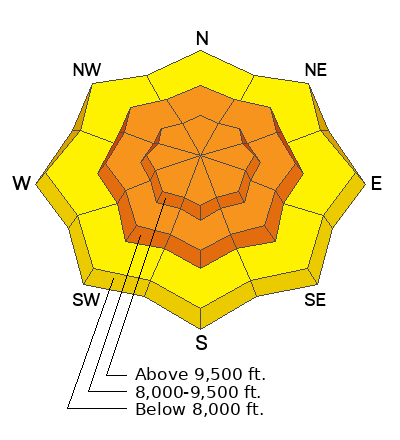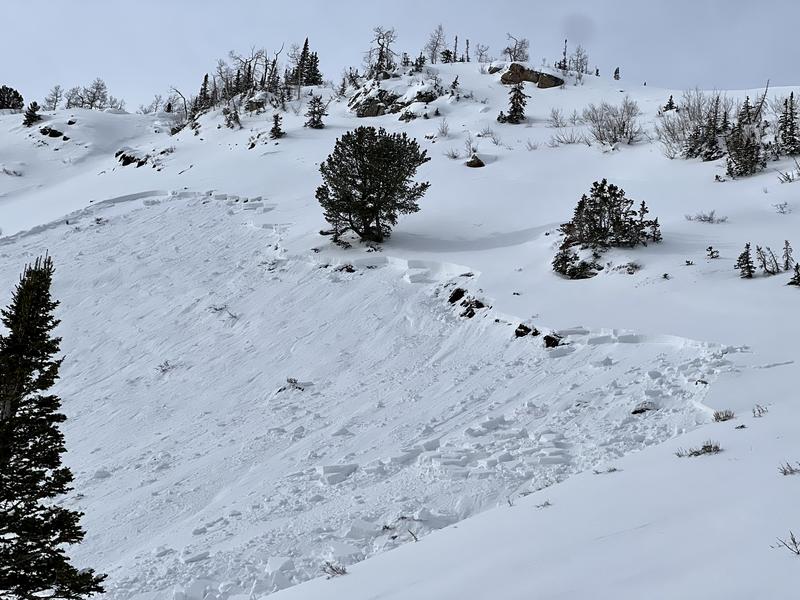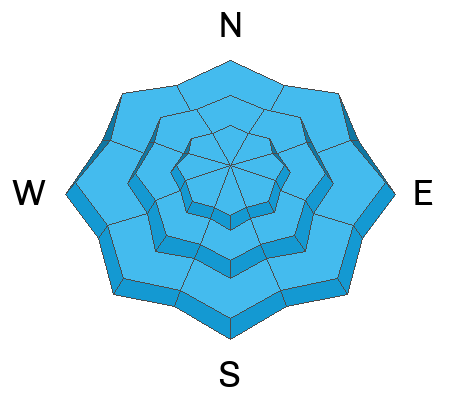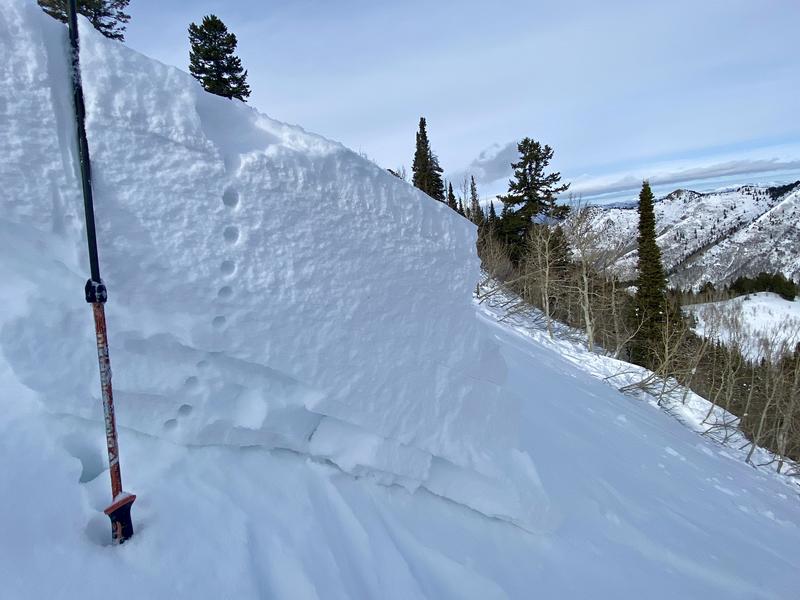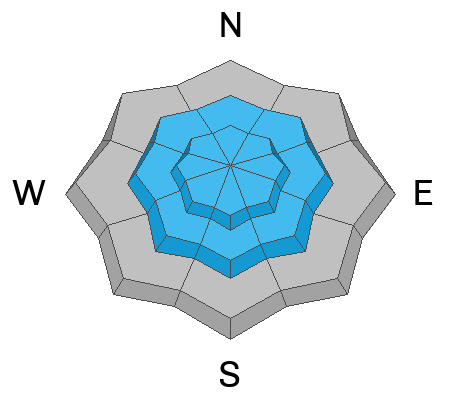Join the Utah Avalanche Center and the Utah Division of Outdoor Recreation to celebrate the Fourth Annual Avalanche Awareness week from December 4 - December 11. Click
HERE to view the full list of events for the week.
The National Weather Service has issued a Winter Weather Advisory from 6:00 PM Sunday to 9:00 PM Monday, where we could see 5-10 inches of new snow.
This morning, under mostly cloudy skies, the mountain temperatures range from 29-35 °F. Current ridgetop winds are blowing from the southwest at speeds of 10-15 mph with gusts into the 20's. Overnight a few snowflakes were squeezed from the sky, with Aspen Grove reporting a trace with 0.05" of SWE.
Today, you can expect partly to mostly cloudy skies and temperatures rising into the low to mid 30's °F. Winds will remain southerly and increase throughout the day as they usher in a cold front currently stalled around the Utah/Idaho border. Southerly winds are forecasted to reach speeds of 15-25 mph, gusting into the 30's & 40's across the upper-elevation terrain.
No new observations from the Provo area. Backcountry observers in the Cottonwoods continue to report large and dangerous avalanches, and many note cracking and collapsing on nearly every step they take. Check out all the recent avalanches
HERE, as there are too many to list. Snow safety teams continue to trigger avalanches with explosives that are large enough to catch, carry, bury, and or kill a person.
If you see or trigger an avalanche adjacent to a ski area, please notify them. We've had two avalanches triggered the past two days where ski patrol and helicopters were called in because nobody reported the avalanches, and they have to assume someone could be buried.
Photo: Lemieux, Slab Avalanche Yesterday in West Monitor.

